Remains of fallen soldiers in Korean War identified
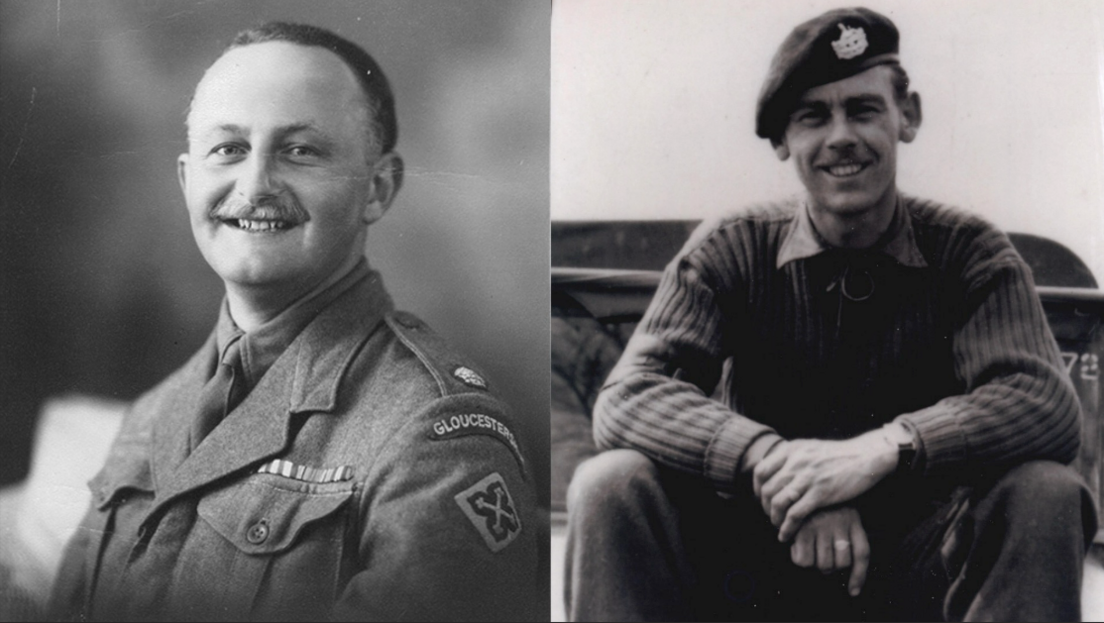
Maj Patrick Angier and Sgt Donald Northey died making a last stand on Hill 235 in the Korean War
- Published
Two British soldiers who died at the Battle of the Imjin River have been identified in unmarked military graves in South Korea.
Maj Patrick Angier and Sgt Donald Northey were among those killed when about 400 men from the Gloucestershire Regiment fought a last stand on Hill 235 during the Korean War.
That last stand delayed thousands of Chinese troops long enough for the UN forces to regroup and protect Seoul.
Researcher Nicola Nash had no DNA evidence available but used hundreds of documents including maps, telegrams, reports and letters to identify the men.
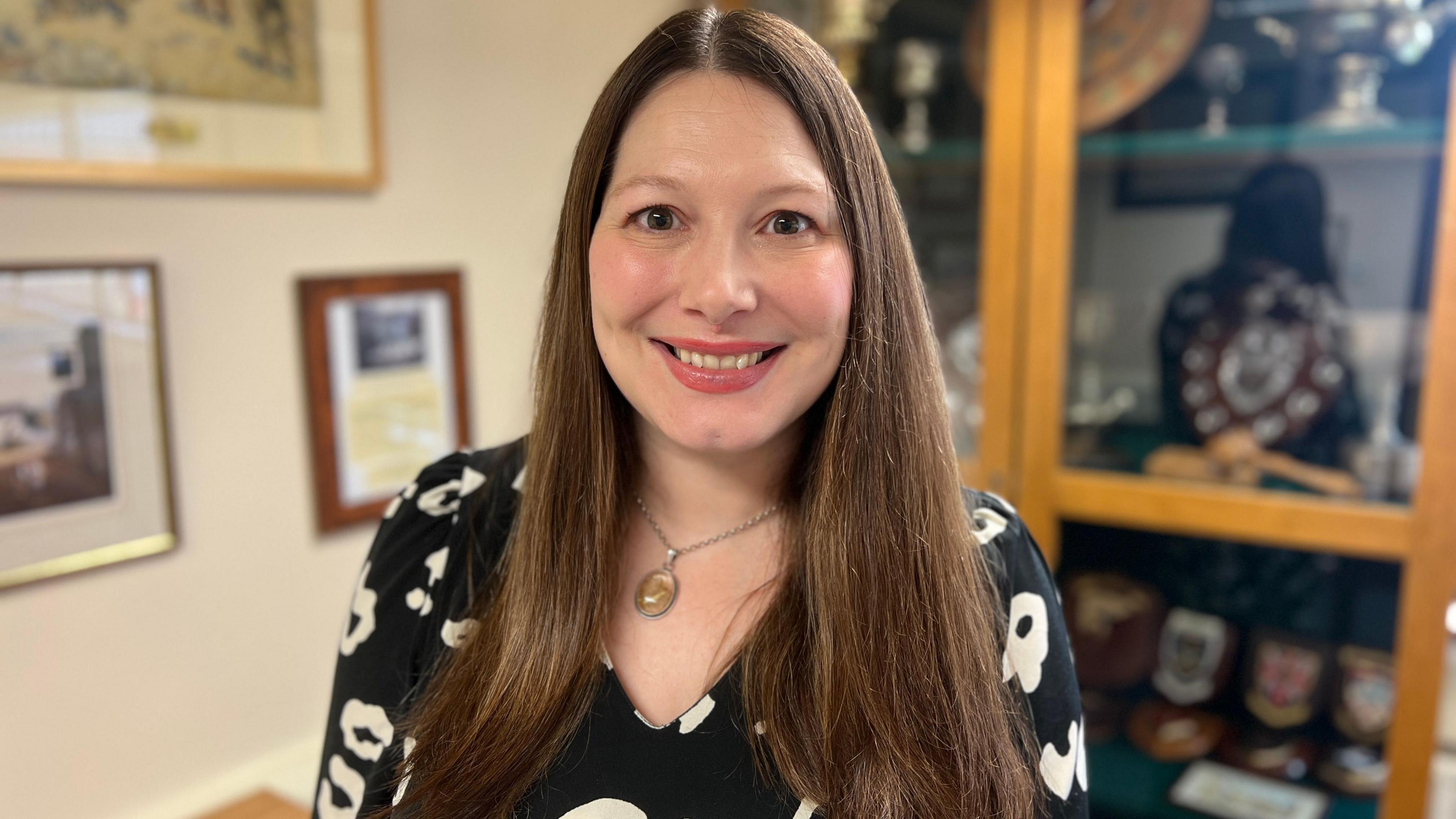
Nicola Nash used records to identify those buried in the graves
The men had been thought left on the battlefield until Ms Nash, a Commemorations Case Worker at the Joint Casualty and Compassionate Centre in Gloucester, decided to look into records surrounding the graves.
“There were telegrams from the teams who buried the bodies in the battlefield sent back to the war office of the unknown soldiers that they’d found and the artefacts found with them," she said.
"The burial report, for example, for who we now know is Sgt Northey says the casualty was found wearing sergeant's stripes and was a Gloucester.
"All of these little things give us clues to these men’s identities. Looking back at it retrospectively we know who is missing and it allows us to put the pieces of the puzzle together.”
After six years of meticulous research Ms Nash said she reached a point where she was able to conclusively identify the remains.
“The war office would interview returning prisoners of war and there are plenty of eyewitness accounts of what happened to Maj Angier and Sgt Northey, not just in the national archives, but the personal letters of the families and the Soldiers of Gloucestershire Museum.
"So piecing together all of this and being able to eliminate other potential candidates gets me to the point where I say it just cannot be anyone else. It's fantastic. The best part of this is being able to go to these families and give them closure.”
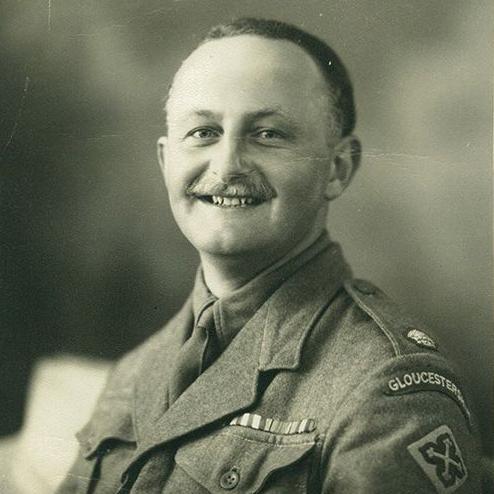
Major Patrick Angier died in the bloodiest battle fought by British Forces since World War II
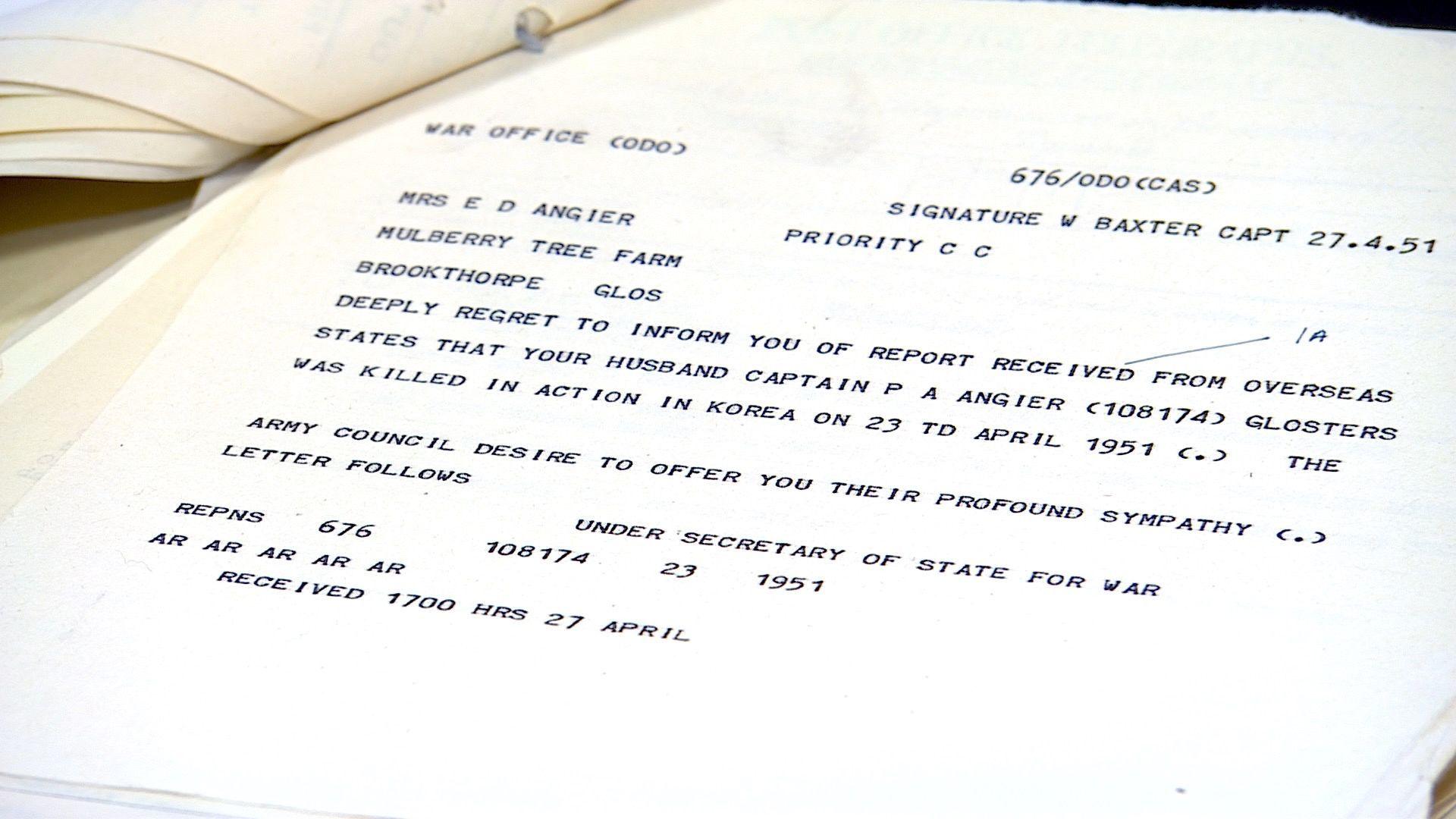
Nicola Nash checked hundreds of documents including telegrams
During the battle, about 4,000 troops of the British 29th Brigade, including about 700 from 1st Battalion, The Gloucestershire Regiment, faced more than 27,000 men of the Chinese 63rd Army.
Over three days from 22-25 April 1951 about 400 "Glorious Glosters" fought a last stand on Hill 235, which was later renamed Gloster Hill.
Although the battle was a defeat for the UN forces, the actions of the 29th Bridge and the Gloucestershire Regiment significantly delayed the Chinese forces allowing UN forces to regroup and block their advance on the capital of South Korea, Seoul.
Those on the hill were told by the regiment’s commanding officer, Lt Col Carne, to hold it at all costs.
Maj Angier, who was 30 when he died on the 23 April, is reported to have replied: "Don’t worry about us, sir. We’ll be alright."
Only about 40 of the 400 who held the hill made it safety back to their own lines with the rest killed or captured.
Maj Angier was buried in a field grave and his body was recovered several weeks later and eventually interned in the UN Memorial Cemetery in Busan.
The identities of about 70 other British soldiers buried there remain unknown.
Guy Puzey, Maj Angier’s grandson, is writing a book about him and said hearing the news he had been found was profound.
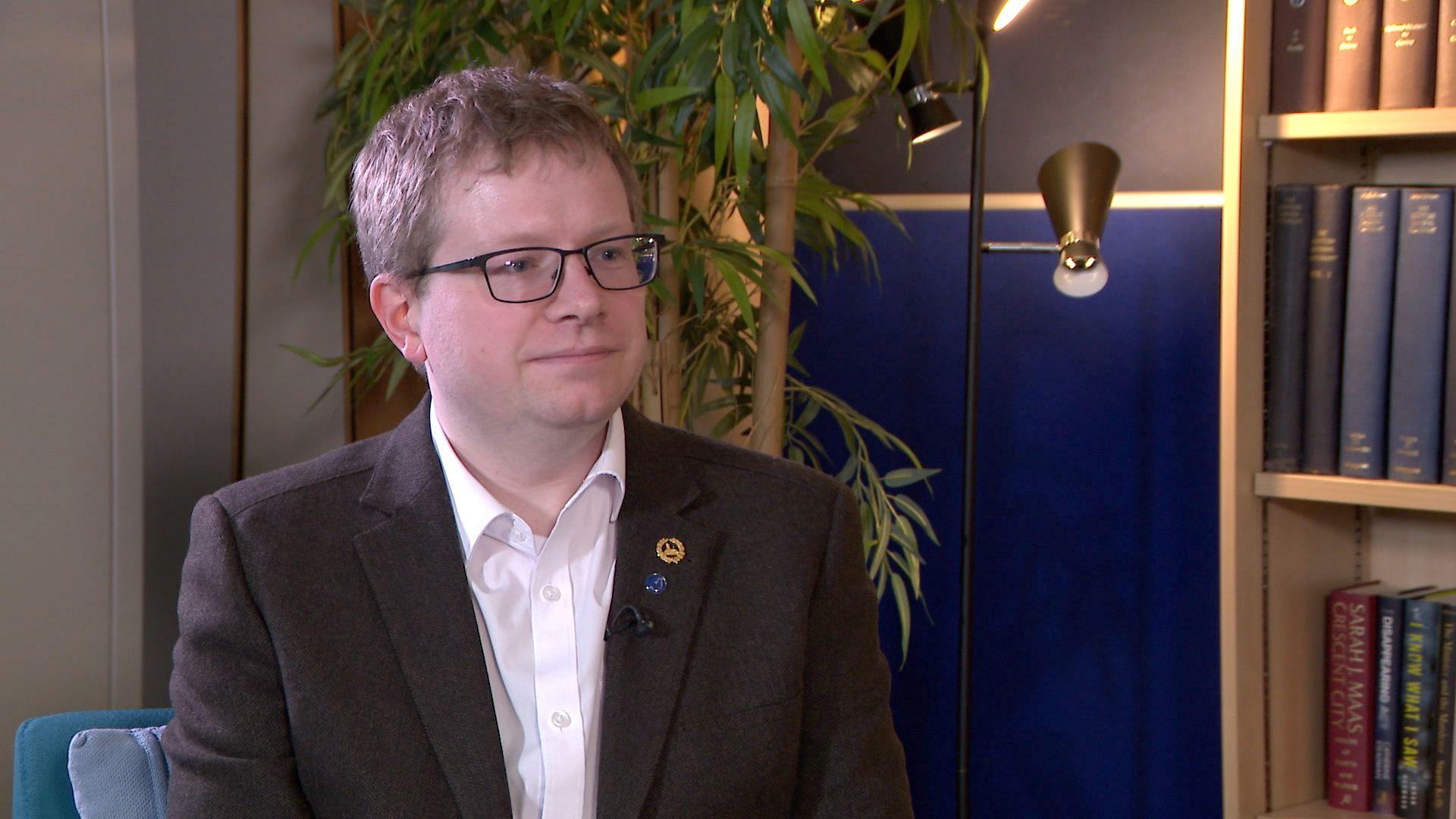
Guy Puzey, Major Angier's grandson, said the discovery gave his family "understanding"
He said it meant they "are focused on how to remember him, how to commemorate him, how to understand that loss, that bereavement.
"I’ve been surprised how much it's changed how I think about what happened to him.”
“When we’re thinking about those who are lost in war, we’re not just thinking about the lost past but also the lost future, the lost potential of what they could have done in the rest of their lives.
"We grieve that lost future, that lost time that we never had with my grandfather, that my mother never had with her father.
"This gives a new way of understanding what his death meant, what it meant for Korea as well. So while the pain and trauma doesn’t go away it gives us a new way of thinking about what that loss means in the grand scheme of things."
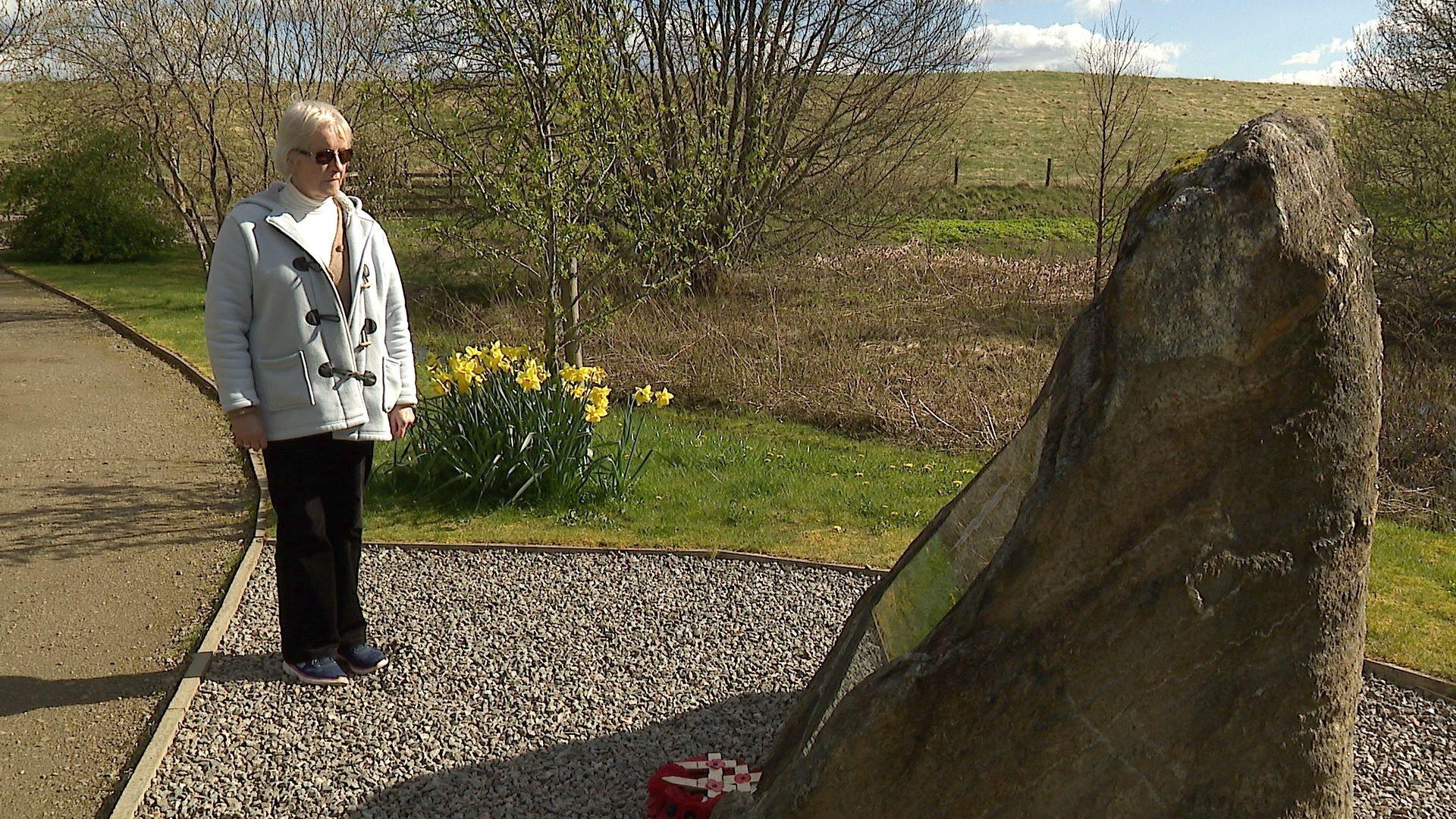
Tabby Angier, Major Angier’s daughter, said the discovery made it "clear" where her father was
Tabby Angier, Maj Angier’s daughter, was a young child when her father left for Korea.
“My father told my mother before he left Gloucester that he was unlikely to return because he knew it was going to be a very nasty war," she said.
She visited the cemetery in Busan to pay her respects to her father’s fallen comrades not realising he was there too.
Mrs Angier said: "I must have walked past my father’s grave, not knowing he was there because it said unknown soldier.
“(This discovery) makes it clear where he is. I was told at one point his body would never be found so it was a complete surprise. It’ll mark his grave for history. But it’ll never change the fact that he never came back.”
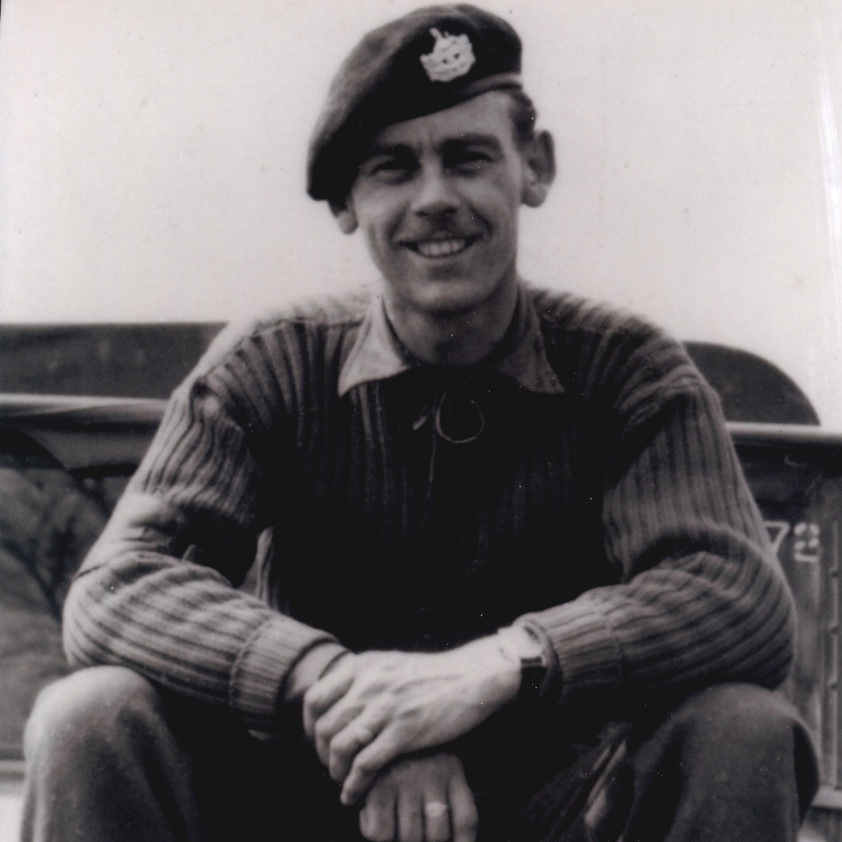
Sgt Donald Northey's son praised Nicola Nash's kindness in finding his father
Sgt Donald Northey died on 24 April 1951 after being shot in the neck by a sniper.
His son Michael, who lives in Portsmouth, said he only had happy memories of his father.
He said the find was "unbelievable" and praised the "kindness" of Ms Nash for finding his father.
When he found out about his father he said he cried "uncontrollably".
"To be able to go there... and see his name" will be "quite astonishing," he said.
In November the families of Maj Angier and Sgt Northey will be in Busan for a special rededication service where the soldiers, along with two others identified from the Royal Ulster Rifles, will receive new named headstones to mark their final resting place.
Related topics
- Published5 September 2023

- Published18 April 2011
- Published22 March 2024
